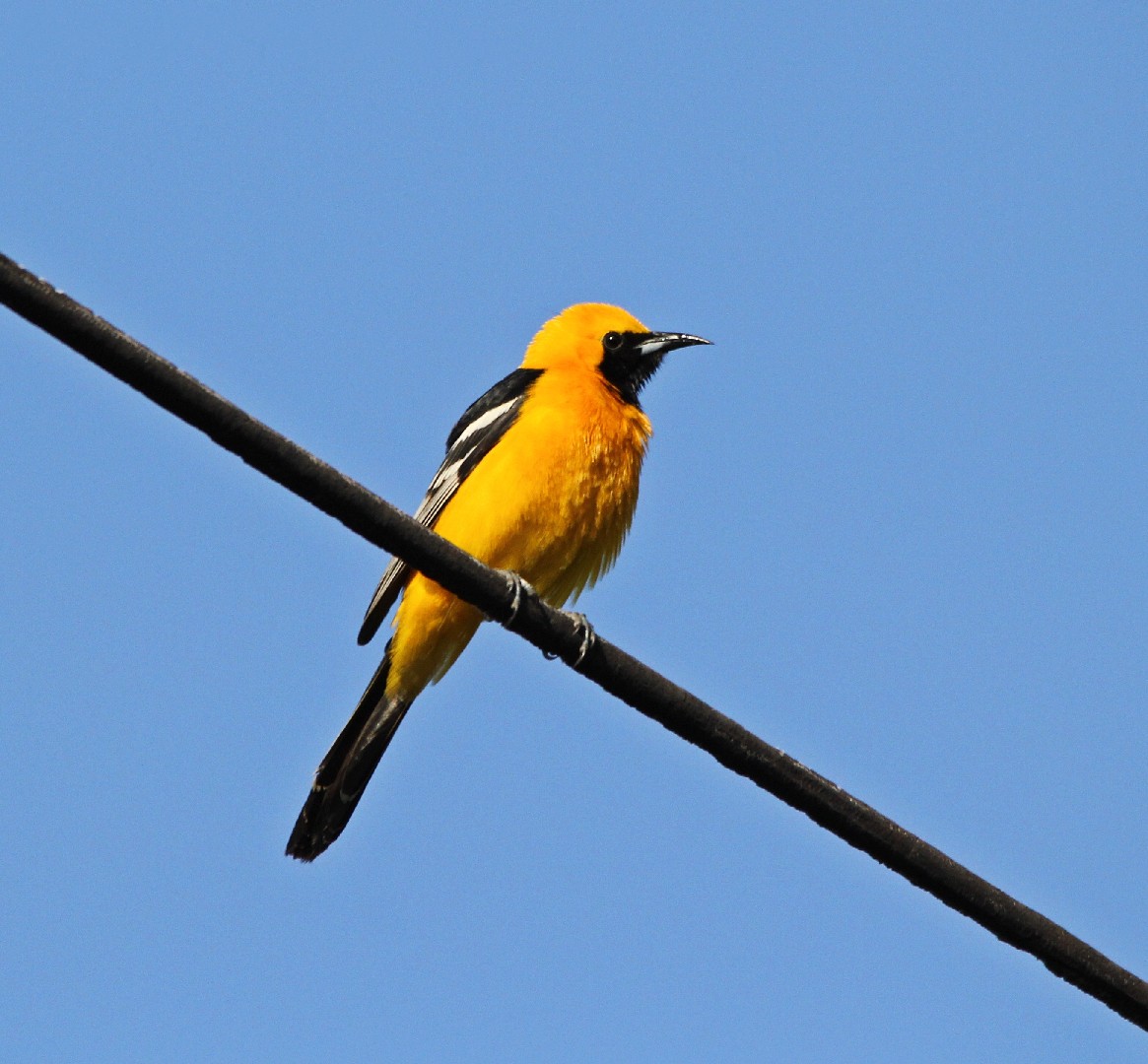Hooded Oriole
A species of New world orioles Scientific name : Icterus cucullatus Genus : New world orioles
Hooded Oriole, A species of New world orioles
Botanical name: Icterus cucullatus
Genus: New world orioles
Content
Description People often ask General Info
 Photo By Shravans14 , used under CC-BY-SA-3.0 /Cropped and compressed from original
Photo By Shravans14 , used under CC-BY-SA-3.0 /Cropped and compressed from original Description
The hooded Oriole is a slim and slender medium-sized blackbird that inhabits open forests and urban areas. Unintentionally conspicuous, its hiding abilities are considered "clumsy" and its chattering call often gives its location away. This passerine bird regularly nests in palm trees and it's able to hang upside down in order to reach insects under the leaves. It's a common visitor of bird feeders and likes to feed on fruit and flower nectar.
Size
18 - 20 cm
Life Expectancy
6 years
Nest Placement
Tree
Clutch Size
3 - 7 eggs
Incubation Period
1 - 2 broods
Number of Broods
12 - 14 days
Feeding Habits
Hooded Oriole forages for spiders and insects like ants, beetles, and caterpillars under leaves. They also consume fruit, berries, and nectar, often visiting flowering plants and hummingbird feeders.
Habitat
Hooded Oriole are typically found in open and dry habitats across the Southwestern United States. They thrive in areas dotted with trees like cottonwoods, willows, sycamores, and palms, showing a particular affinity for palm trees. These birds often take advantage of plantings in residential and commercial landscapes, which has allowed them to extend their range northward. During the nonbreeding season in Mexico, hooded Oriole adapt to similar open environments that provide scattered trees for shelter and nesting sites.
Nest Behavior
Hooded Oriole's females construct the nest within 3 to 6 days, exhibiting a remarkable nest-building agility and skill.
Nest Characteristics
Hooded Oriole creates a 4-inch tall hanging basket nest, stitched to the undersides of palm, sycamore, or eucalyptus leaves roughly 20 feet high. The construction involves weaving grass and plant fibers and is distinctively positioned under the leaves.
Dite type
Insectivorous
People often ask
General Info
Feeding Habits
Bird food type
Bird Feeder Type

Platform
Sounds
Call
Recording location: Mexico
Behavior
Hooded Oriole exhibit a methodical and adept approach to foraging, often performing acrobatic feats, such as hanging upside down from foliage while searching for food. They typically forage within the lower to mid-levels of trees and shrubs, and exhibit strong, swift flight patterns when moving across their habitat. Notably more private in their vocalisations, hooded Oriole usually sing from within the cover of vegetation. They are known to flick their tails upward while engaging in frequent chattering. During territorial conflicts, males adopt a distinctive upright stance with bills pointed skyward, along with sustained chattering. Courtship rituals involve the male hooded Oriole's fluttering wing display and bowing behavior toward the female, showcasing a unique blend of aggression and attraction in their interactions.
Species Status
Not globally threatened.